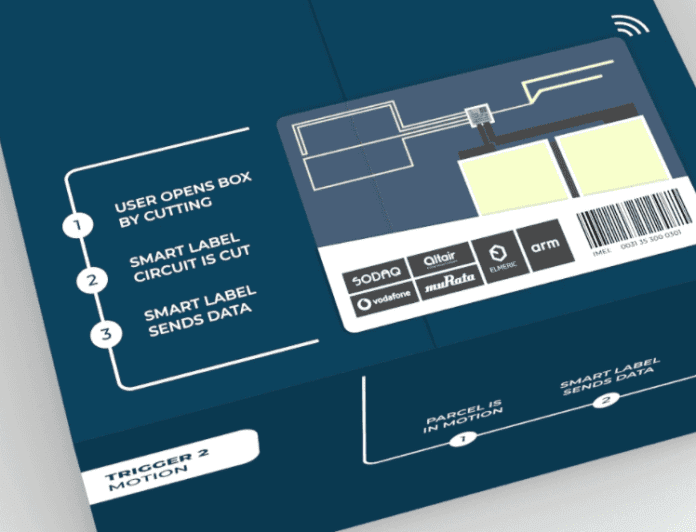Note, this article is taken from a new report on the asset tracking sector, called Asset Tracking – and the March Towards Massive IoT. The report can be downloaded here.
With some horror, the idea of disposable tracking tags and labels, applied to millions of boxes and parcels, raises the grim notion the planet will be littered with little pieces of technology. The environment is an urgent concern, and the technology industry is supposed to make things better.
That is the line, at least, which every corporation pays lip service to. So what about these innovations in the asset tracking space, from the likes of Sigfox and Vodafone, offering low-price IoT solutions to bring the cost of tracking to rock-bottom – and send ‘massive’ volumes of tagged assets into the supply chain?
Well, both firms reckon their products are green(ish). Are they concerned about littering the planet? “Yes,” responds Phil Skipper, head of global business development at Vodafone.
The battery in Vodafone’s new €5 printable tracking label, which it has developed with German pharmaceuticals firm Bayer, as well as chip designer Arm and chip-maker Altair Semiconductor, is alkaline, rather than lithium-based, he notes, and so “dissolvable”.
It is the same with the other printed components, bar the chip, which can be easily retrieved. Vodafone and Bayer are also looking into using biodegradable plastics, made from fish scales, for the substrate, he says.
Skipper explains: “You have the printed antenna, the printed battery, the printed input and output, and then the chip. Recovering the chip is relatively straightforward; it sort of comes off in the wash, literally. The other stuff liquefies. If you can find a clever way to deal with the substrate, then I think you are in a fairly good position.”
What about France-based IoT provider Sigfox, which is prepping a cut-down dollar-priced module for low-level tracking? The firm says it will issue both disposable single-usage versions and reusable versions with replaceable batteries. It has in mind to develop a recycling scheme for the disposable version – “like with glass bottles schemes for milk or cola”.
Ajay Rane, in charge of business development, comments: “Just because they are a buck each doesn’t mean we can throw them away, and make them disposable. We are trying to come up with new ways to recycle and reuse them.” We will see, and both firms – along with their collaborators, and a whole industry pushing IoT connectivity – will be held to their word.
Because if dirt-cheap disposable tracking tags are the only way for IoT to reach massive-scale, from companies whose corporate energy commitments and tech-for-good promises tell of a greener future, then everything hinges on making them green and clean, and not littering the planet.
Note, this article is taken from a new report on the asset tracking sector, called Asset Tracking – and the March Towards Massive IoT. The report can be downloaded here.

